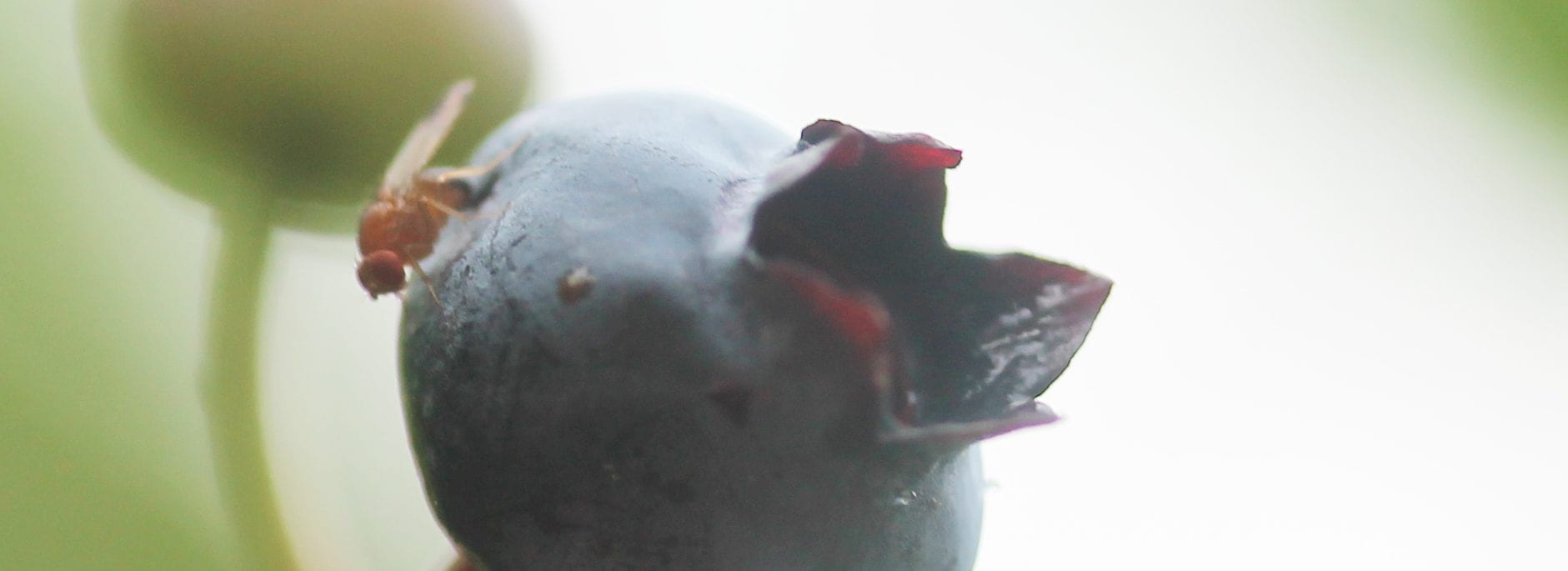52 SWD were caught in Rensselaer County and 67 were caught in Albany County during the weeks ending July 10 and July 9, 2018, respectively. For Rensselaer County, this was the third consecutive week of SWD capture. In Albany County this was sustained catch. Four traps were being monitored at each location by Natasha Field and Laura McDermott, Eastern NY Commercial Horticulture Program.

Specifically for the Rensselaer County location, two traps are within an exclusion netted blueberry planting wherein a single male was caught. Compare that to 39 males and 13 females in the two traps set outside the exclusion netting. These traps were in a hedgerow adjacent to a June-bearing strawberry field that is done being harvested. Prompt renovation of June-bearing strawberry fields is warranted.
This level of trap catch points out the importance of not leaving unharvested, overripe fruit in fruit plantings and orchards. Dropped blueberries and raspberries can be sprayed with Danitol 2.4 EC and dropped apples, pears and stone fruit can be treated with Asana XL (2ee) to control SWD. Review the quick guide on this, if this might be an option you want to pursue to reduce SWD populations. The importance of sanitation to manage this insect cannot be overemphasized.
In Albany County, traps are set in and around summer raspberry, The two traps set in the crop caught 19 males and 9 females; the traps set on the edge of the crop caught 29 males and 10 females. SWD management tactics need to be put in place to protect ripe and ripening raspberries.
If you want to monitor SWD in your fruit plantings, a simple, easy to make trap and bread dough lure can be used. Instructions on how to make an SWD trap are available on the Cornell Fruit Resources SWD Monitoring web page. Check traps daily to minimize the number of fruit flies you will need to sort through to find SWD; and focus on identifying the males, because they're easy to ID. You can also sample fruit and check it for larvae via salt flotation.

